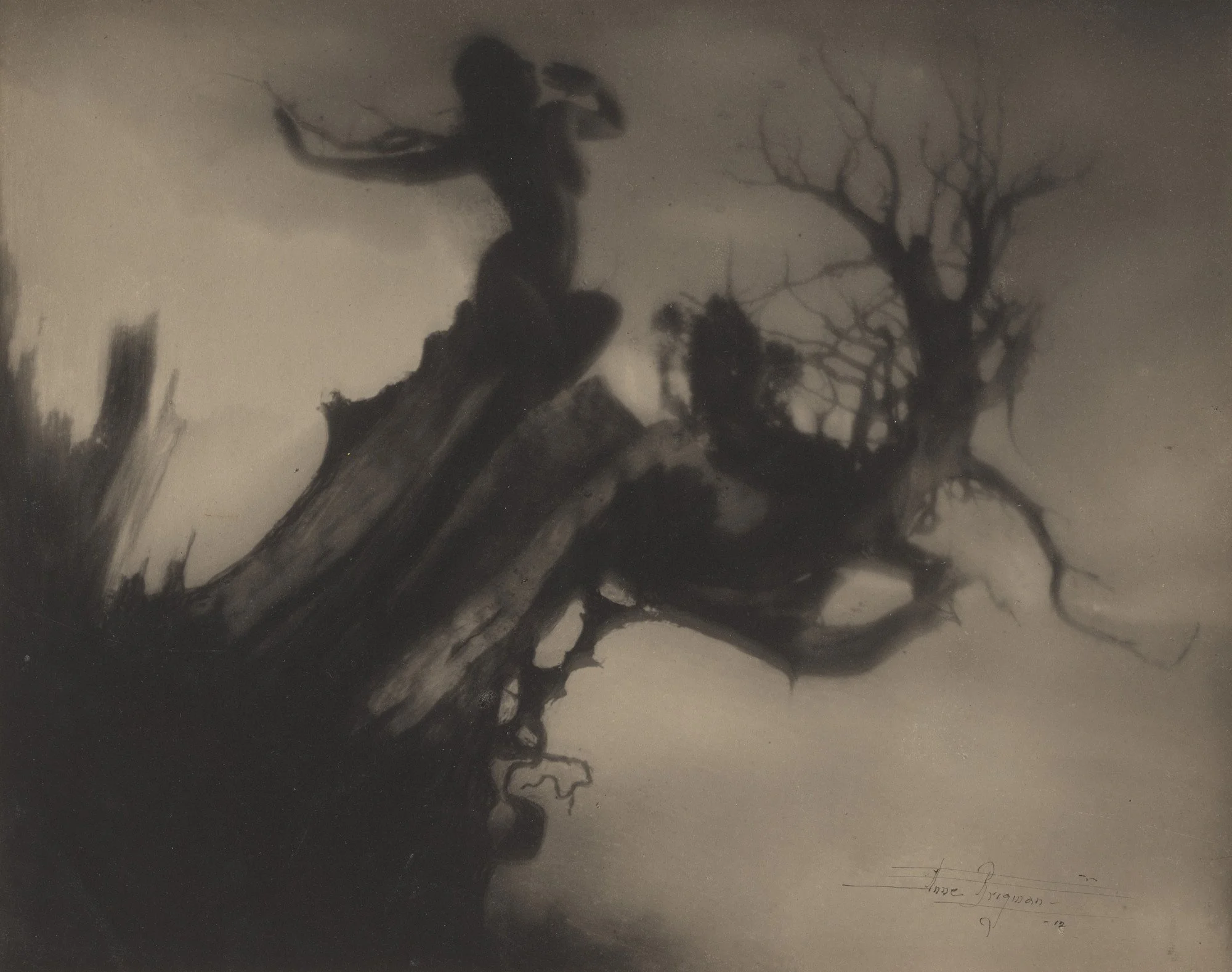Writing
Storm Tree by Anne Brigman, 1911
Preserving the Divine: Anne Brigman’s Reverence for the Earth as a Rejection of the Modernist Aesthetic
Masters Thesis, 2022
Anne W. Brigman (1869–1950), a Hawai’ian born photographer, Pagan, poet, and member of the Photo-Secession Movement, was an influential artist, first-wave feminist, and art writer. Although much of her influence has remained uncredited until recent scholarship, her modernist aesthetic and early ecofeminist ideology can be traced through multiple threads of photographic history. The thesis emphasizes the importance of returning to Brigman’s work in the 21st century. Brigman’s images carried stories of nymphs, dryads, and pagan gods of the wild, and she regularly spoke of her reverence for the natural world and the spaces that she was photographing. Significantly, Brigman may have been an influence for Stieglitz to look to the natural world for spirituality during his time of personal crisis, resulting in his Equivalents (1992) series of cloud photographs. The thesis presents an ecofeminist and ecocritical examination of Brigman’s work as a reflection on the natural world during her time, and advocates for Brigman’s work to be viewed as a radical celebration of the female natural divine as a creative force in both art and nature.
Tabby Structures on Ossabaw, photo by Anna Robertson, 2021
Ecological Scars of Ossabaw Island, 2021
Written in partnership with the Georgia Historical Society for their Hidden Histories Exhibition in Spring of 2021, this essay serves as a brief overview of the human-made changes of the landscape of Ossabaw Island, a Coastal Heritage Center along the Georgia Coast.
Old River Control Structure, Concordia Parish by Virginia Hanusik, 2020
Higher Water: Virginia Hanusik’s Application of Radical Ecology
An essay concerning the resurgence of Radical Ecology and Ecofeminism present in contemporary photographer Virginia Hanusik, who has become well-known for documenting climate change in the Mississippi Delta.
Palmist Building, Summer by William Christenberry, 1982
Left-Behind Places: Alabama Vernacular Architecture through the Art of William Christenberry, 2021
This essay details the relationship with not only memory, but also the documentation of the multi-generational poverty and neglect of the American South documented by photographer and Hale County, Alabama native William Christenberry.



